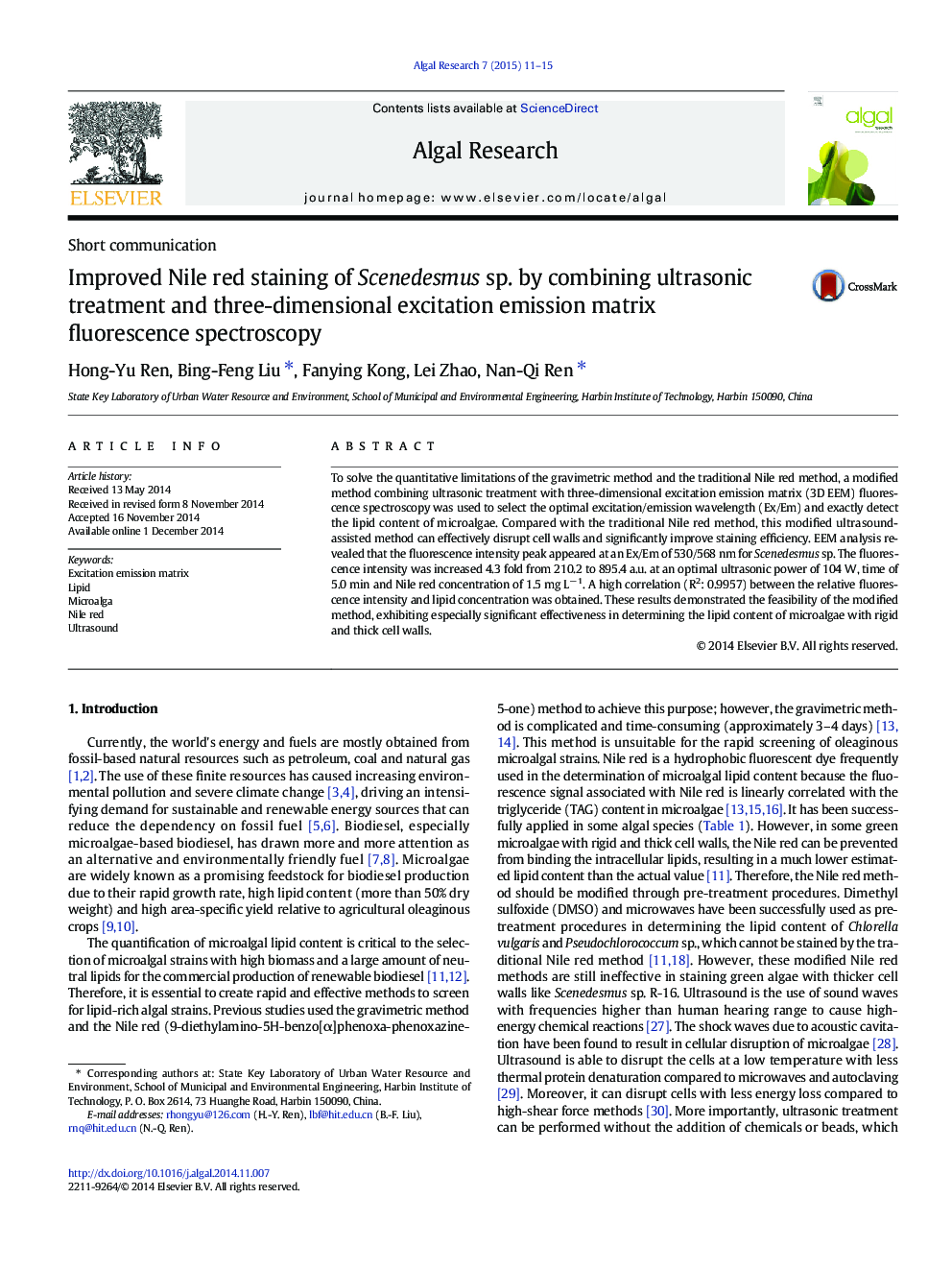| Article ID | Journal | Published Year | Pages | File Type |
|---|---|---|---|---|
| 1742054 | Algal Research | 2015 | 5 Pages |
•EEM fluorescence spectroscopy was used to determine the algal lipid content.•Ultrasonic pretreatment can significantly improve Nile red staining efficiency.•A high correlation between fluorescence intensity and lipid concentration was found.•The method was effective in quantifying lipids in microalgae with thick cell walls.
To solve the quantitative limitations of the gravimetric method and the traditional Nile red method, a modified method combining ultrasonic treatment with three-dimensional excitation emission matrix (3D EEM) fluorescence spectroscopy was used to select the optimal excitation/emission wavelength (Ex/Em) and exactly detect the lipid content of microalgae. Compared with the traditional Nile red method, this modified ultrasound-assisted method can effectively disrupt cell walls and significantly improve staining efficiency. EEM analysis revealed that the fluorescence intensity peak appeared at an Ex/Em of 530/568 nm for Scenedesmus sp. The fluorescence intensity was increased 4.3 fold from 210.2 to 895.4 a.u. at an optimal ultrasonic power of 104 W, time of 5.0 min and Nile red concentration of 1.5 mg L− 1. A high correlation (R2: 0.9957) between the relative fluorescence intensity and lipid concentration was obtained. These results demonstrated the feasibility of the modified method, exhibiting especially significant effectiveness in determining the lipid content of microalgae with rigid and thick cell walls.
